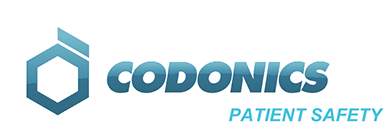On the Floor
Overview
As patients are moved from the OR to PACU to the floors, medications are continually administered and anesthesia is still “prescribing”. There is no written order. The anesthetist administers medications based on the vital signs of the patient and post documents. Once the patient is taken to the floor, there may be several IVs and various medications that continue, but the workflow changes.
Medications prescribed for patients on the floors have written orders. If the doctor prescribes an injectable, the medication is either prepared in pharmacy and sent up to the floor or it’s prepared by a nurse at a med station. In either case, the medication is taken to the bedside to be administered to the patient.
Bar Code Medication Administration (BCMA)
Using BCMA, the nurse scans a barcode on the patient’s wristband at the bedside prior to administration to first confirm that the patient is the right patient. Then, the nurse scans the barcode on the medication and to ensure the right medication at the right dose is given at the right time by the right route to the right patient, carrying out the “Five Rights of Medication Administration” to ensure patient safety.

Safe Label System integrates with BCMA
In order for BCMA to work, you need the “B” — the barcode. Codonics Safe Label System (SLS) is a medication safety device that uses barcode technology to read vial and ampoules at the point of care. It provides visual and audible identification of the drug in hand and, on demand, produces a Joint Commission-compliant label that includes a barcode for integration with the electronic health record (EHR). This barcode helps pharmacy with billing and 340B initiatives. SLS greatly improves safety and compliance, and completely eliminates the need for handwritten labels, providing an easy-to-read and ready-to-apply label that removes the element of human error.
Highly effective at reducing medication errors
Use of drug barcodes nationwide in hospitals, combined with automated patient-specific preparation at the point of care and USP rules, based on real-time identification, preparation and labeling – the essence of SLS, has led to drastic reduction in medication errors. When these processes are fully integrated with CPOE/EHR/AIMS systems, confirmation of medications against orders with documentation of use in the patient record results in safer, more effective patient care while reducing costs. Let Safe Label System be a tool to help your clinicians in the fight against preventable medication errors.
